1977–79 Lincoln Continental Town Car and Town Coupé: Pre-Downsized Decadence
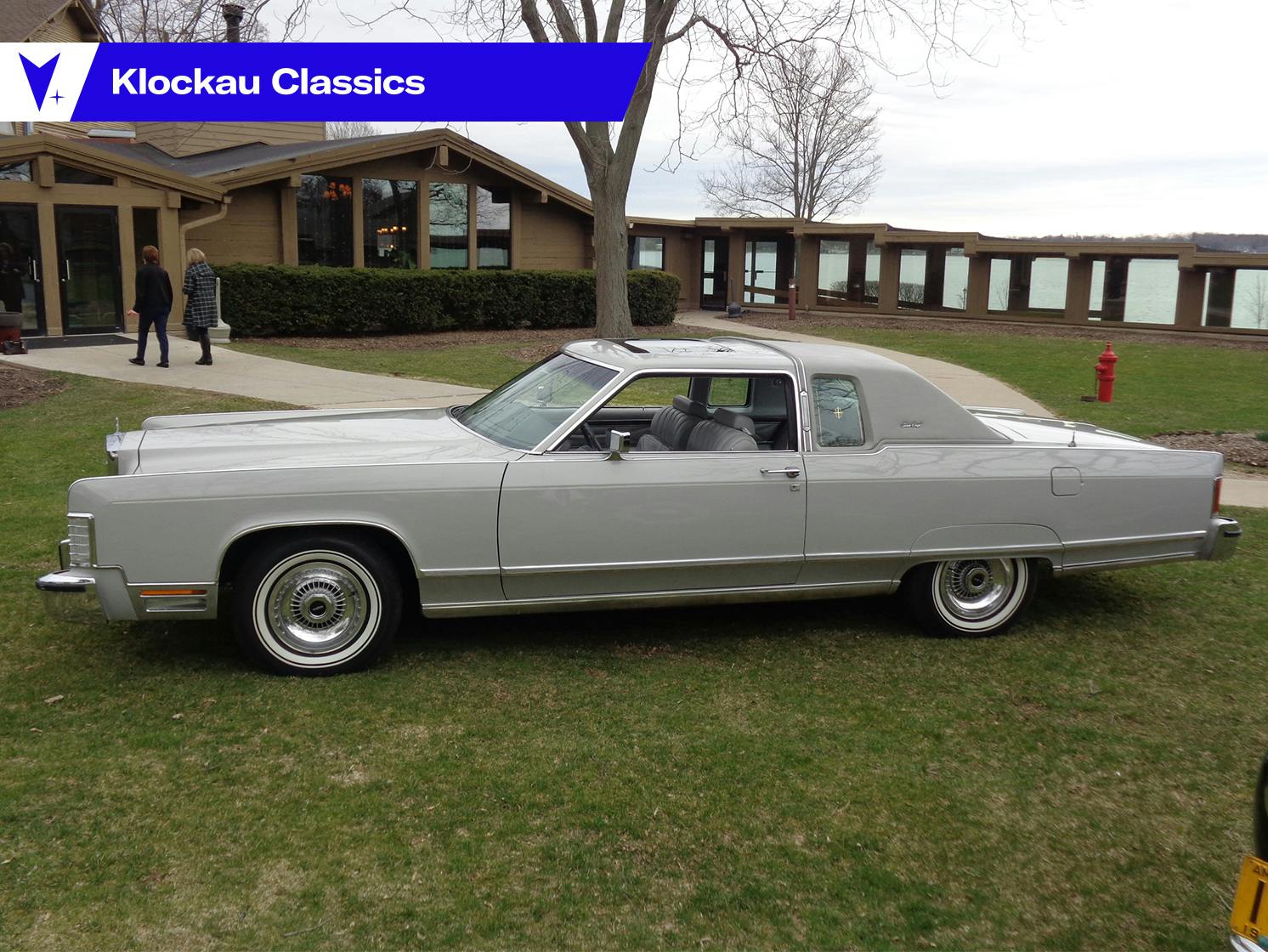
Today we celebrate the last of the mastodon luxury cars. Uncompromised in sheer size. Sheer luxury. Rear-wheel drive. V-8 power. Stretch-out room. No battery other than the typical unit to power the starter and multiple power gadgets and luxurious extras. Opera windows. Coach roofs.
The last vestige of this kind of traditional American luxury car ended when the last Lincoln Town Cars rolled off the line in St. Thomas, Ontario in August of 2011., nearly ten years ago. But those final Town Cars were like a 1987 Ford Taurus compared to the much more vintage Lincolns I will be discussing today.
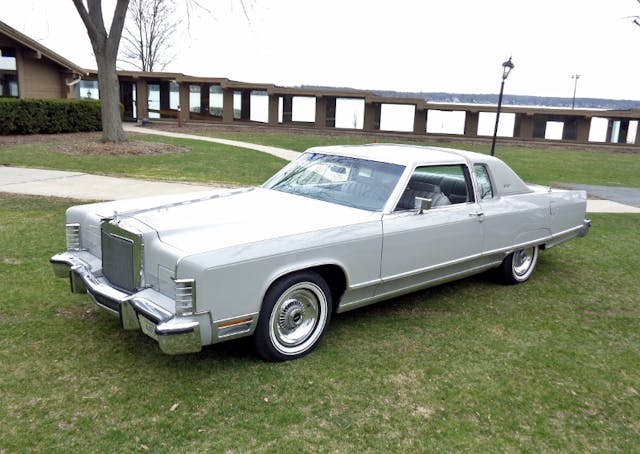
The coupe version had been discontinued thirty years prior to those final Panther-chassis Town Cars, but in the mid to late 1970s, a twenty foot long, 460-cubic-inch V-8-powered luxury cruiser really meant something. Lexus, Infiniti, Acura and Tesla did not exist. And in the late Seventies, the Lincolns reigned supreme in sheer size and road-hugging weight once arch rival Cadillac shrunk its cars.

The Lincoln Continental coupe returned to the lineup in 1966, five years after the classic 1961 Continental was introduced. The Lincoln name just barely avoided being eliminated from the Ford Motor Company roster after the bigger-than-a-Cadillac 1958–60 model’s sales tanked. Robert McNamara wanted Lincoln gone and only saved it due to his admiration of a particular Thunderbird styling study. The T-Bird coupe proposal was modified into a four door Lincoln (with the now-famous center opening doors added) by the design staff and subsequently approved for production.
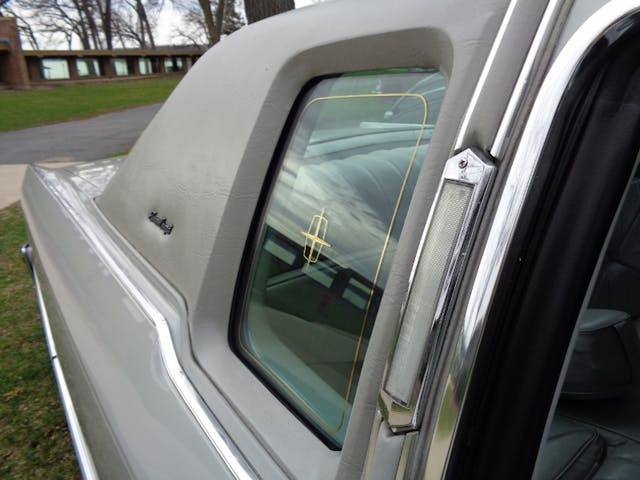
As a result of these major changes, there was initially a very limited lineup consisting of only a four-door sedan and four-door convertible sporting rear-hinged doors, a Continental feature that would be retained for the rest of the decade. The coupe was an attempt to broaden the lineup, and was possibly added due to the future cancellation of the slow-selling convertible in 1967. A more formal roofline was added to the coupe in 1968, but the mild restyling was most likely overshadowed by the new Continental Mark III personal luxury car. It soon outsold the Continental coupe many times over.
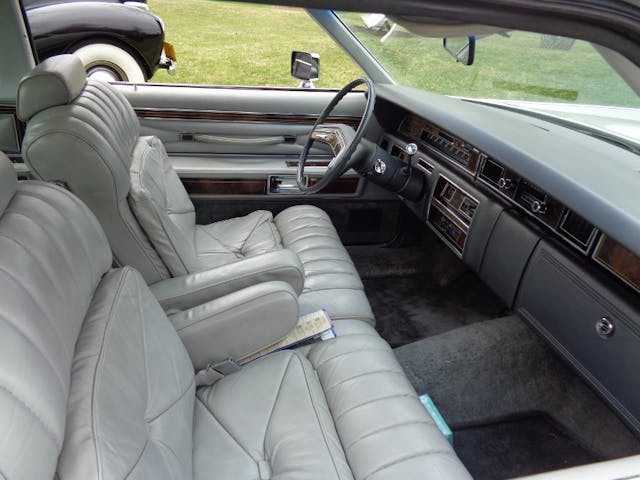
In 1970 a redesigned Continental appeared, minus the suicide doors. Hidden headlamps were a new feature. It continued to be available in sedan and two-door hardtop models. As before, the Mark III blew the Continental coupe out of the water sales-wise. Power came from a 460-cu-in, 365-hp four-barrel V-8.

First introduced in 1969 as an interior option, the Town Car became a full production model in 1972 on the sedan, although the package was also the basis for a 50th Anniversary package in 1971. The 50th Anniversary Town Car included special gold paint (although other colors were available), Town Car interior and a commemorative plaque on the instrument panel. The 1972 package included Town Car script on the sail panels, special upholstery in velour or optional leather, Cavalry twill vinyl roof, special keys and the owner’s initials on the front doors. In 1973 this option was extended to the coupe, and the Town Coupé was born.
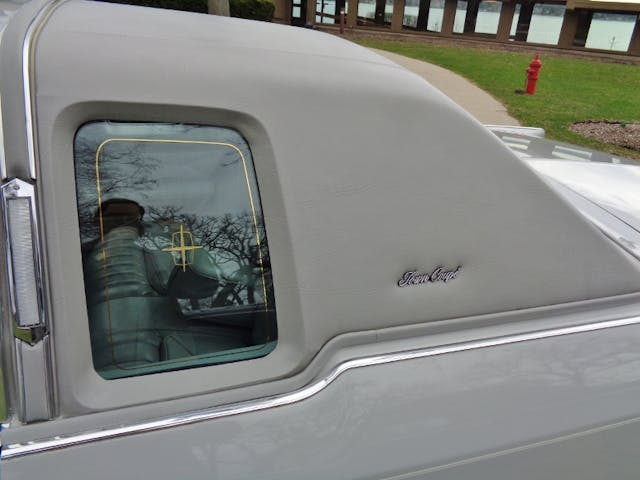
There was a mild restyle for 1974, mostly due to a new 5-mph bumper being added to the rear, matching the heavier front bumper that was federally mandated the year before. While Lincoln simply extended and reinforced the ’72 front bumper in 1973, the 1974 had a new design to match the back. A new grille with thin vertical bars, parking lamps moved from the bumper to the front fenders and revised tail lamps rounded out the changes. Both the Town Car and Town Coupé continued as premium versions of the Continental, along with the Mark IV, which had replaced the Mark III in 1972.
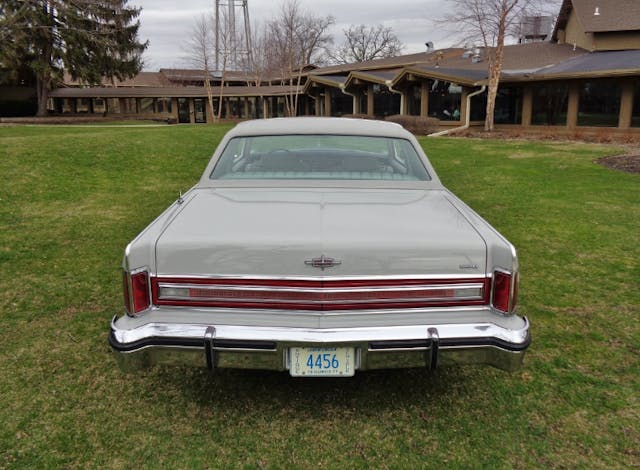
In 1975, the non-Mark Series Continentals received a mild freshening. The biggest change were more formal roof lines on both the sedan and the coupe. While the sedan received an optional oval opera window taken from the Mark IV, the Continental coupe and Town Coupé received a square opera window in the rear pillar with a gold Continental star inset into it.

Town Coupés added an opera light set into the B-pillar, along with the usual added power and comfort upgrades. Seats in the Town Car/Coupé were in a new loose-pillow style that was rapidly being added to every Brougham, Regency, and Limited luxury package in the industry. I find these interiors extremely luxurious and appealing, especially with the optional leather seating surfaces.
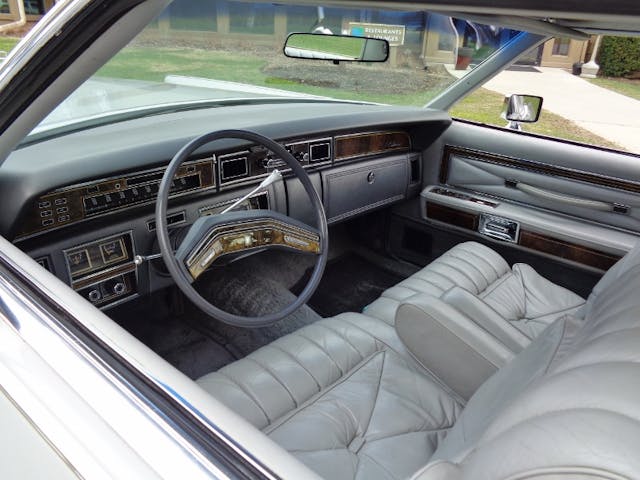
In 1977, the Continentals received a Mark-style vertical grille and new hood, but were otherwise little-changed. Of course, in 1977 Cadillac introduced its downsized C-body de Villes and Fleetwoods. Although drastically reduced in both size and weight, these cars actually had more passenger room and trunk room compared to the ’76 Cadillacs.
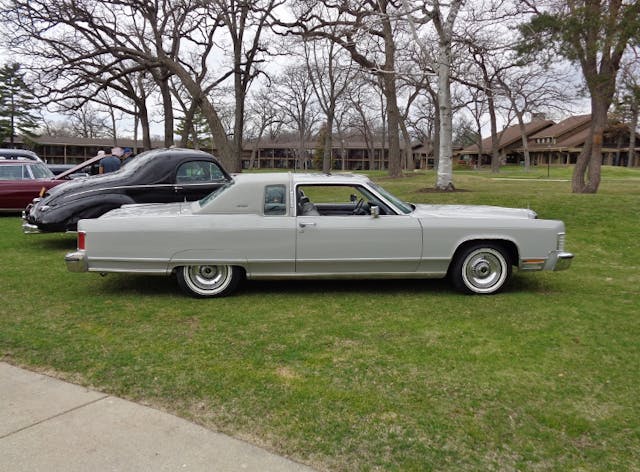
They were the cars of the future, but at the time, many Cadillac owners were probably wondering what happened to their car. (They sold very well, though!) I wouldn’t be surprised if some of those Cadillac owners went to Lincoln in 1977–79. But it couldn’t last. Federal Corporate Average Fuel Economy regulations were coming, and Lincoln was going to have to do the same thing, and soon.

Not quite yet, though. In 1978, the Continentals got more open rear wheel wells, thanks to reduced-size fender skirts. It also got a new instrument panel (basically a Ford LTD/Mercury Marquis dash with extra gilt). The 400 V-8 was standard by this time, but you could still get the 460 as an option. But come 1979, all Connies got the 400. Dagnabit!
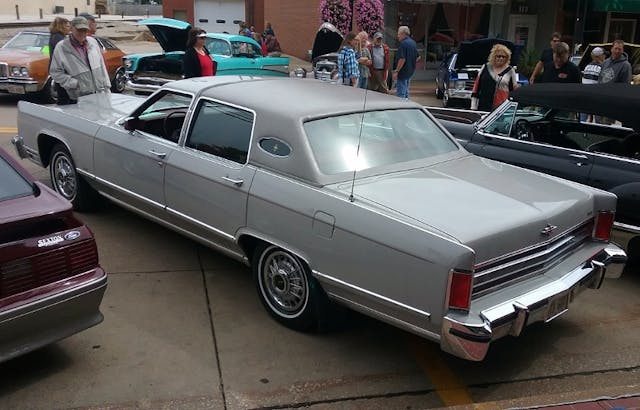
The party was just about over for the truly full-size Continental, and 1979 was the final year. There were only minor cosmetic changes. The silver trim on the instrument panel was changed to woodgrain and there were a few new colors.
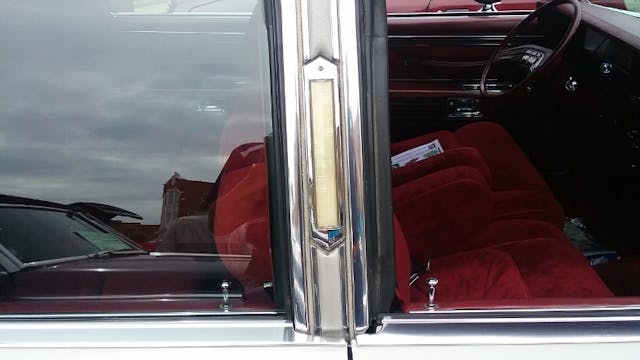
A Collector’s Series special edition was introduced in 1979 to celebrate the last of the traditional Continentals. Colors were limited to white or midnight blue metallic. Inside, a unique Kasmin II luxury cloth interior with special 36 oz. carpeting was available in midnight blue only, though leather was an option. Other special features included leather-wrapped tool kit, owner’s manual and an umbrella.
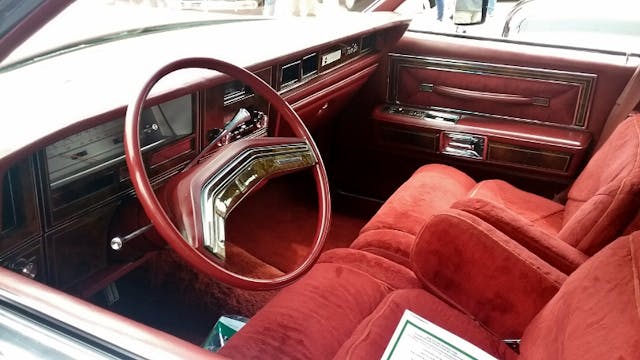
Unfortunately, this package was only available on the sedans; the Continental coupe and Town Coupé were left out. Fortunately, all the usual gadgets and power options were available, as usual. If you wanted a truly large Continental, this was your last chance. It was now or never! New, trimmer Continentals were introduced for 1980, based on the Panther platform Mercury Marquis and Ford LTD that had debuted in 1979.

The 1980 Continentals and Marks were now on the same platform, with the main difference being different front and rear styling and a shorter wheelbase on the two-door Mark VIs. There was also a new four-door Mark VI. The Town Coupé continued on the sedan’s wheelbase, but only for one model year.
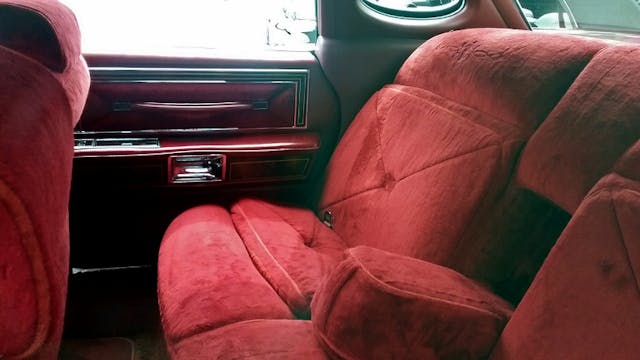
In 1981, all Continentals were renamed Town Cars. The trim level had now become the model name. What had been the 1980 Town Coupé was still available, but it was now called a Town Car Signature Series two-door. The coupes never sold like the sedans did during the Seventies, as most two-door buyers went for the Mark VI instead. 1980–81 Non-Mark coupe sales were minuscule even by the previous standard, and they were eliminated for the 1982 model year.
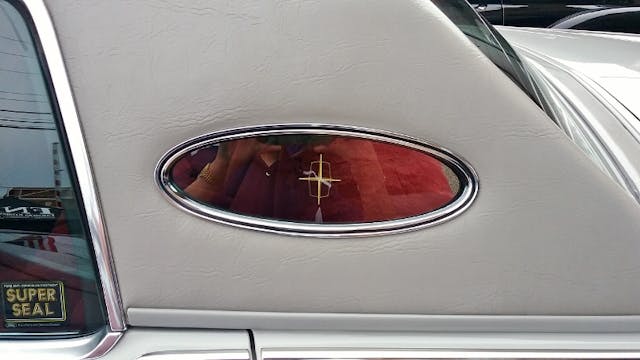
Starting in 1982, only the four-door Town Car would continue. An “aero” facelift in 1985, along with the concurrent introduction of much smaller front-wheel-drive Cadillac de Villes, Fleetwoods (the RWD Fleetwood Brougham carried on, however) Buick Electras, and Oldsmobile Ninety-Eights resulted in an uptick of sales for the Town Car that would last through the end of the 1980s. A redesigned version would begin the ’90s, but that’s a story for another time.

The two cars featured today are both in a most elegant color, Dove Gray. The 1977 Town Coupe was owned at the time by my friend and fellow LCOC member, John McCarthy, and photographed at the LCOC Lake Shore Region spring meet at the historic Lake Lawn Resort in Delavan, Wisconsin. The 1979 Town Car was spied at the fall Trains, Planes and Automobiles car show held in Geneseo, Illinois. Both are prime examples of the now-extinct Detroit Luxury Car. I miss cars like these. But at least I can gawk at prime examples at car shows!



I love that car